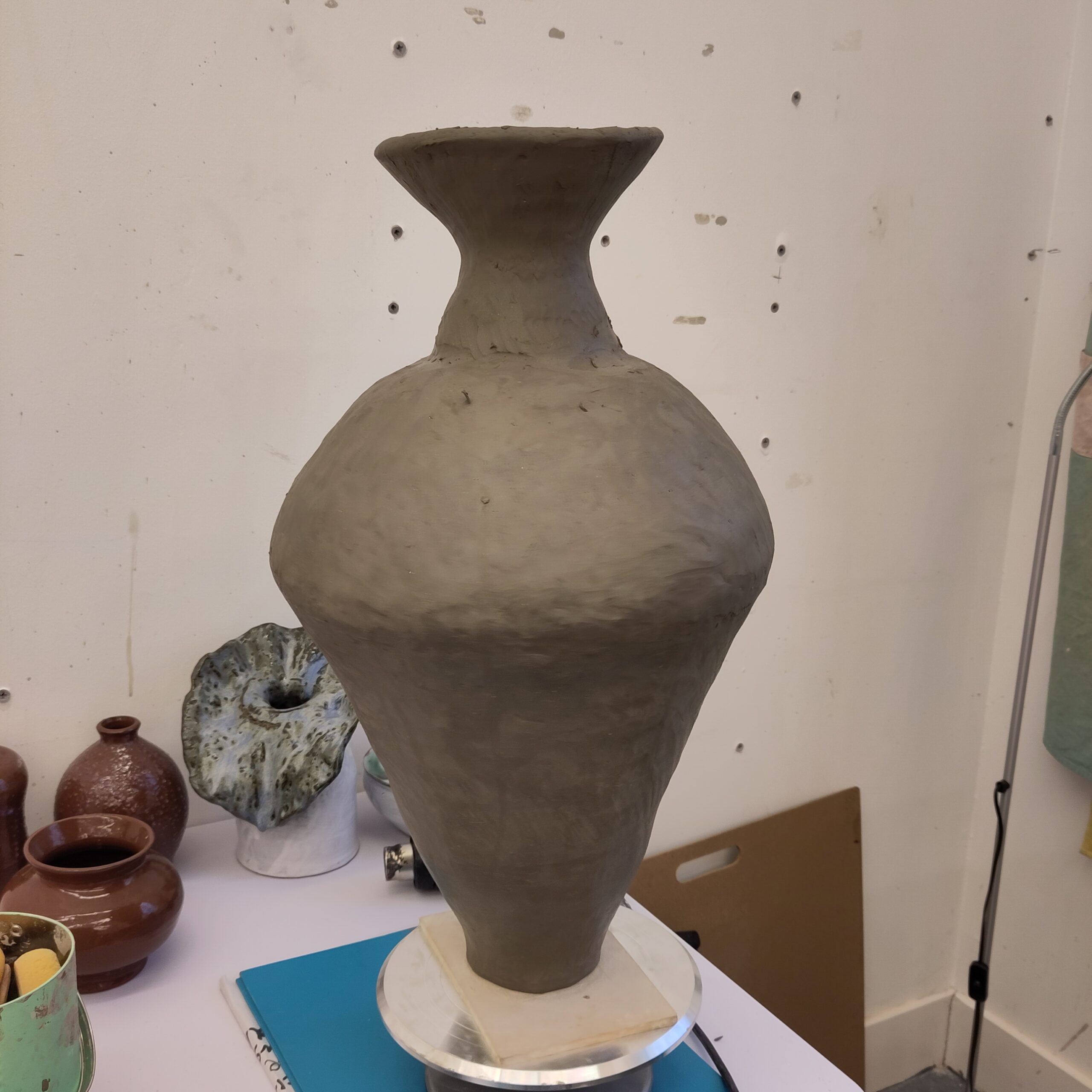Properties & Qualities
Application
Product
Qualities
3D
Colour
Other
Sample Information
Date of creation
17/07/2023
Culture & Context
In Jomon period Japan, approx 15,000 years ago, before humans learned to farm crops, people were coil building pottery. Famously the ‘flame pots’ highly decorated functional-ware. This tradition was convergently developed across the world until the advent of proto wheel-throwing in Mesopotamia in which the technique of building with coils was adapting onto a wheel to build more quickly and evenly.
Process & Production
| A coil can either be extruded or rolled by hand, ideally with the width of a 5 pence piece. Coils are laid in sections and cut into rings. Working from top to bottom the coils are massaged together to form the walls. Always working in this direction to ensure you are building one layer of clay on top the next strengthening the foundations – otherwise the walls will become too thin and collapse under the weight of the vessel. Between layers a serrated kidney is run along the inside and outside to disturb the coils and smooth the surface – after this using finger the surface is buffed. This will stop the coils separating as it dries ensuring a water-tight vessel. |
Credits
Craft Maker
Persephone Russell
Library Contributor
Persephone Russell
Photographer
Persephone Russell



















